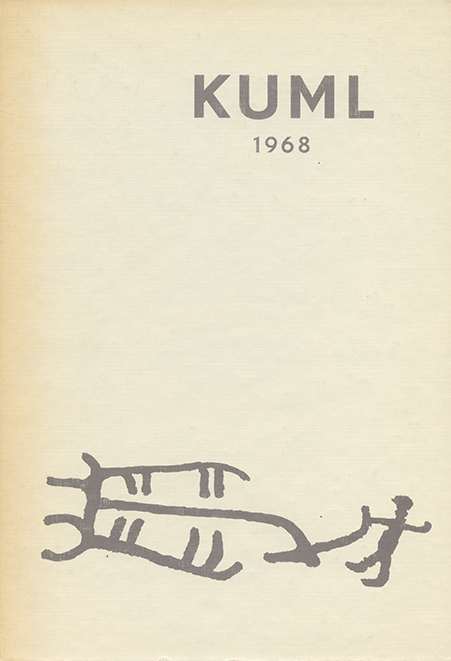Flintægdolken fra Flynderhage
DOI:
https://doi.org/10.7146/kuml.v19i19.105131Keywords:
Flynderhage, dagger, dolk, Kongemose, ornamented, ornamenteretAbstract
Flynderhage
In connection with the publication of the Stone Age settlement at Norslund in KUML 1965, a flint-edge dagger which had been recovered from a nearby kitchen midden by an unqualified excavator was briefly mentioned.
This dagger is the first of its kind to be found in Jutland; corresponding examples have previously only been found in eastern Denmark. It has been made from a metatarsal bone of aurochs or elk. The sides have been scraped smooth and provided with incised geometric patterns, while the edges exhibit long grooves for the insertion of flint blades, fig. 1. The patterns, on the sides are formed by rows of zig-zags, rhombs and triangles. The composition is shown in fig. 2. The hilt has been broken off in antiquity and both edges damaged. The grooves contained neither flint blades nor cement when the dagger was excavated.
The dagger from Flynderhage is typologically identical with the other Danish examples. The daggers from eastern Denmark belong mainly to the Kongemose Culture and there is therefore reason to assign the Flynderhage example to the same culture. It indicates the presence of the Kongemose Culture in western Denmark, a presence which has not previously been documented.
Søren H. AndersenDownloads
Published
How to Cite
Issue
Section
License
Fra og med årgang 2022 er artikler udgivet i Kuml med en licens fra Creative Commons (CC BY-NC-SA 4.0).
Alle tidligere årgange af tidsskriftet er ikke udgivet med en licens fra Creative Commons.


